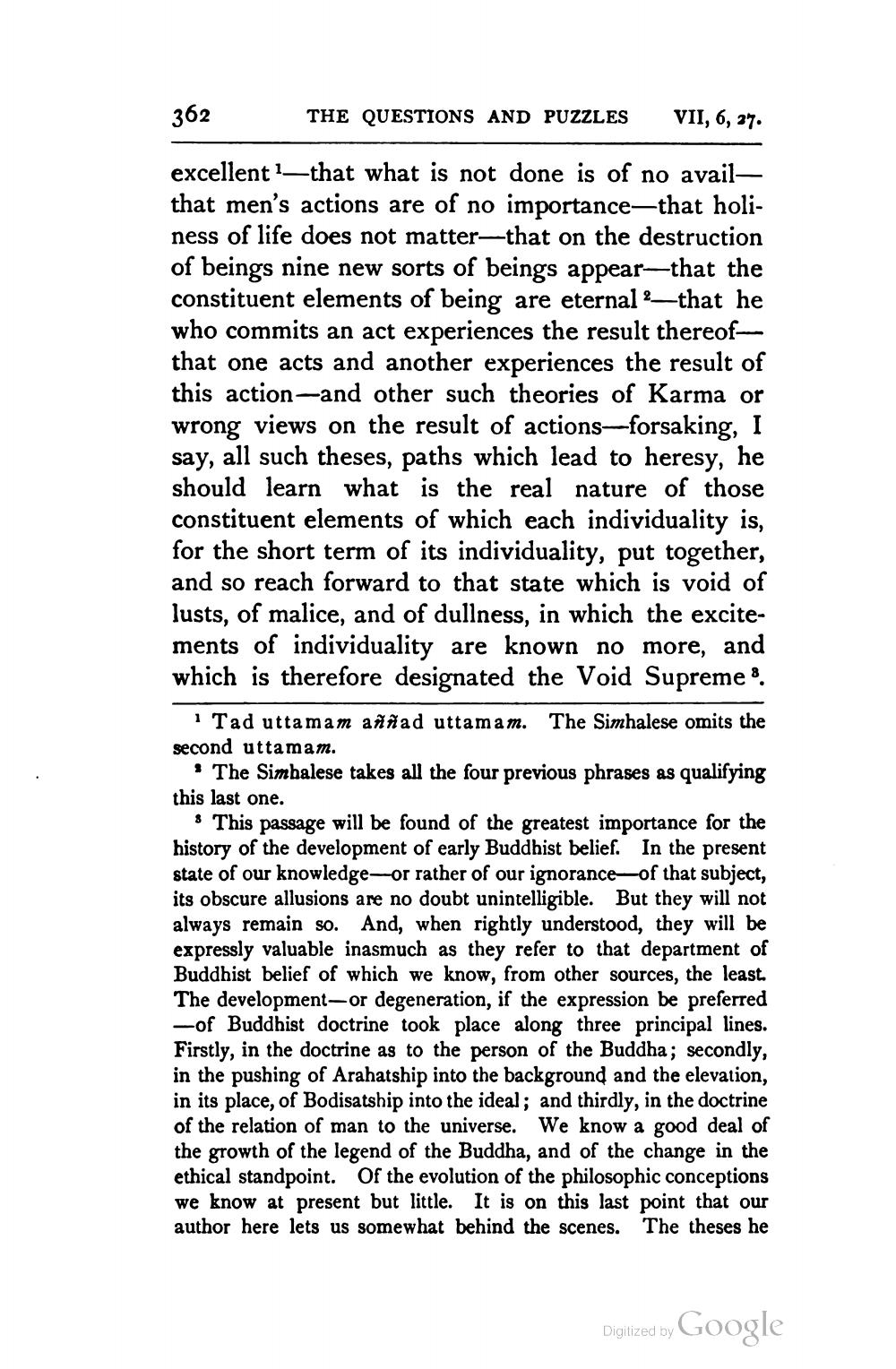________________
362
THE QUESTIONS AND PUZZLES VII, 6, 27.
excellent 1-that what is not done is of no availthat men's actions are of no importance-that holiness of life does not matter-that on the destruction of beings nine new sorts of beings appear-that the constituent elements of being are eternal 2-that he who commits an act experiences the result thereofthat one acts and another experiences the result of this action-and other such theories of Karma or wrong views on the result of actions-forsaking, I say, all such theses, paths which lead to heresy, he should learn what is the real nature of those constituent elements of which each individuality is, for the short term of its individuality, put together, and so reach forward to that state which is void of lusts, of malice, and of dullness, in which the excitements of individuality are known no more, and which is therefore designated the Void Supreme 3.
1 Tad uttamam aññad uttamam. The Simhalese omits the second uttamam.
The Simhalese takes all the four previous phrases as qualifying this last one.
This passage will be found of the greatest importance for the history of the development of early Buddhist belief. In the present state of our knowledge-or rather of our ignorance—of that subject, its obscure allusions are no doubt unintelligible. But they will not always remain so. And, when rightly understood, they will be expressly valuable inasmuch as they refer to that department of Buddhist belief of which we know, from other sources, the least. The development-or degeneration, if the expression be preferred -of Buddhist doctrine took place along three principal lines. Firstly, in the doctrine as to the person of the Buddha; secondly, in the pushing of Arahatship into the background and the elevation, in its place, of Bodisatship into the ideal; and thirdly, in the doctrine of the relation of man to the universe. We know a good deal of the growth of the legend of the Buddha, and of the change in the ethical standpoint. Of the evolution of the philosophic conceptions we know at present but little. It is on this last point that our author here lets us somewhat behind the scenes. The theses he
Digitized by
Google




